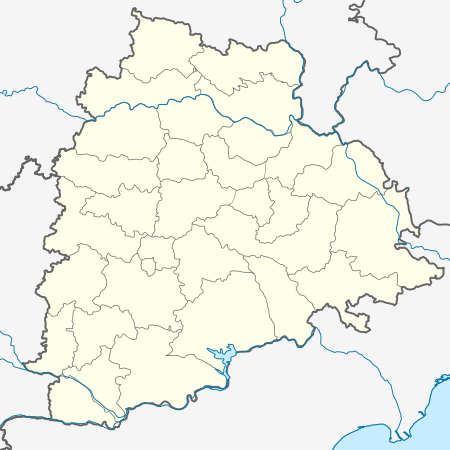Saifabad Palace
Saifabad Palace is a palace built in the late 19th century by the Nizams of Hyderabad. Re-opened in the 1940s, it currently houses the Andhra Pradesh Secretariat and the Telangana Secretariat.
| Saifabad Palace | |
|---|---|
 Location within Telangana | |
| General information | |
| Type | Royal Palace |
| Architectural style | European |
| Location | Hyderabad, India |
| Coordinates | 17.4099°N 78.4690°E |
| Completed | 1888 |
| Opened | 1940 |
| Client | nizams of the hyderabad state |
History
Saifabad Palace was built in 1888 during the reign of sixth Nizam of Hyderabad, Mahbub Ali Khan, Asaf Jah VI. However, when the Nizam went to visit the palace, two local nobles successfully conspired to deter the Nizam from occupying the palace by having a Monitor lizard, a sign of bad luck in his path, cross his path. The Nizam then locked the palace up.[1]
In the 1940s, it was re-opened to house the government of the Hyderabad princely state. It was later designated a heritage structure and currently holds the state governments of both Telangana and Andhra Pradesh.[1]
Controversy
In 2011 there was a plan to demolish the palace and build a bigger office in its palace but the plan was shelved after opposition from the people.[2]
In November 2016, Kalvakuntla Chandrashekar Rao, the chief minister of Telangana proposed demolishing the palace because it was unlucky for reportedly not following the architectural principles of Vaastu. Rao believes that Telangana will suffer for having the building house its government, and only visits the building for cabinet meetings. Rao asked the state governor to tell N. Chandrababu Naidu, the Chief Minister of Andhra Pradesh to vacate the building so it can be demolished and replaced with a Vaastu-compliant structure. The demolition was placed on hold after a petition to the Hyderabad high court by an opposition legislator.[1]
References
- "The 'unlucky' building spooking an Indian minister". BBC News. 7 November 2016. Retrieved 25 November 2016.
- "Hyderabad Greens.org - Heritage Cell Activities". Retrieved 29 July 2011.